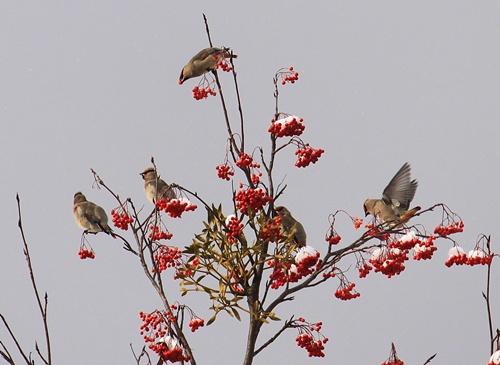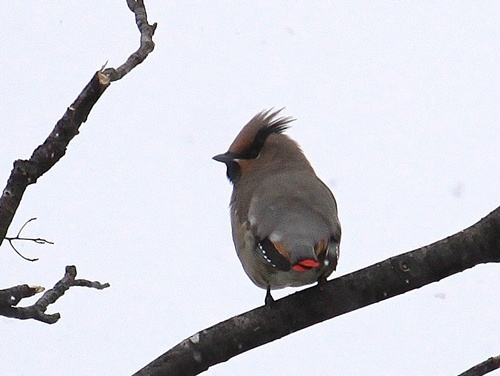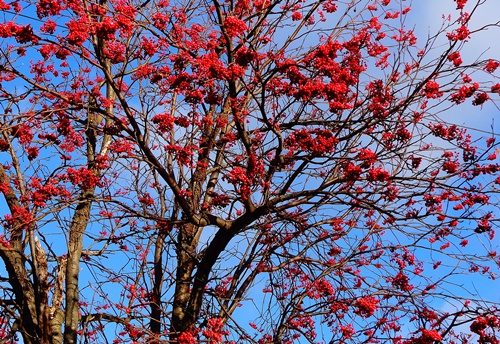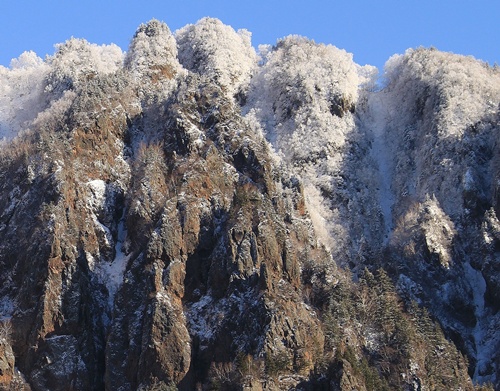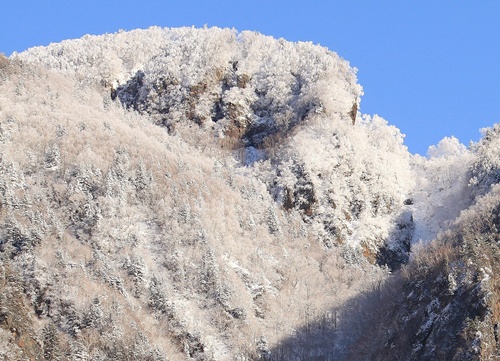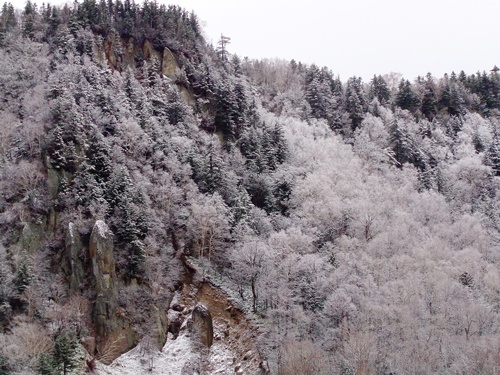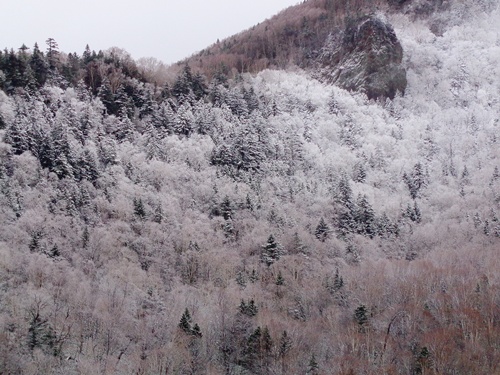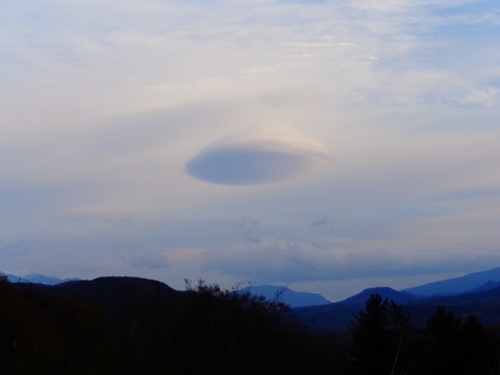“Chiri, chiri, chiri…”
TheBombycilla japonica has arrived again this year.
The birds were seen in the mountains last year, but this year they have quickly come down into the village.
Although several hundred birds are known to be flying around in the mountains, as of the present time it seems that only some 10 to 30 have come down to the village.
If you see a waxwing with a yellow tale, it is a Bombycilla garrulus; if it has a red tail, it is a Bombycilla japonica. In Hokkaido, Bombycilla garrulus are common while Bombycilla japonica are rare. However, this year Bombycilla japonica are forming groups in Sounkyo just as they did
last year.
They love to eat the berries of the Sorbus commixta and Viscum album subsp. coloratum, and serve to distribute the seeds through their highly adhesive droppings.
Known for their always beautifully colored wings and exquisite crest, their visits to the area vary greatly from year to year, which makes it hard to count on seeing them.
Photos: Bombycilla japonica Nov. 13
TheBombycilla japonica has arrived again this year.
The birds were seen in the mountains last year, but this year they have quickly come down into the village.
Although several hundred birds are known to be flying around in the mountains, as of the present time it seems that only some 10 to 30 have come down to the village.
If you see a waxwing with a yellow tale, it is a Bombycilla garrulus; if it has a red tail, it is a Bombycilla japonica. In Hokkaido, Bombycilla garrulus are common while Bombycilla japonica are rare. However, this year Bombycilla japonica are forming groups in Sounkyo just as they did
last year.
They love to eat the berries of the Sorbus commixta and Viscum album subsp. coloratum, and serve to distribute the seeds through their highly adhesive droppings.
Known for their always beautifully colored wings and exquisite crest, their visits to the area vary greatly from year to year, which makes it hard to count on seeing them.
Photos: Bombycilla japonica Nov. 13
